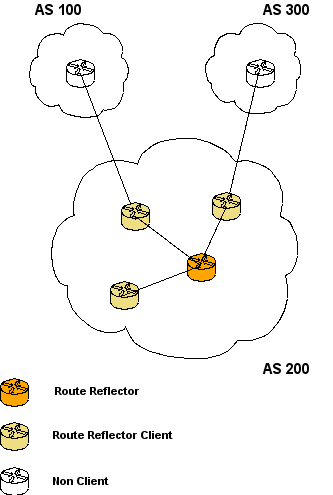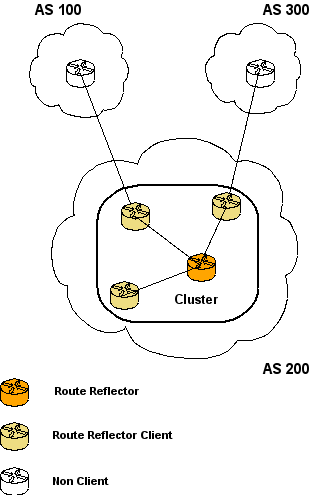What are traps and informs and is it possible to have a NMS (Network Managment System) on your Linux box to receive those messages? Cisco Works is also NMS, you might try this also, it’s possible to install it under VMWare, i had some trouble with 3.1 on Windows 2003 Server Enterprise SP2 though. Complaining always about not enough space on drive c:, however i expanded the disc to have more than 25GB of free space. Still no success. So i got to the point, where i dropped LMS and tried to use already present programs on my Linux box. Would like to see LMS also on my VMWare maybe later.
First make sure you have connectivity to the outside world from your dynamips. Here is a link to an more detailed description http://blog.sazza.de/?p=355. In short you need a local interface that can be bridged. You create a bridged interface and setup this with IP adressing. I use a VMWare interface for this bridged interface. Here is my script:
ifconfig vmnet7 0.0.0.0
ifconfig vmnet7 down
brctl addbr br0
ifconfig br0 10.0.0.1 netmask 255.255.255.0
brctl addif br0 vmnet7
brctl addif br0 tap0
ifconfig br0 up
ifconfig tap0 up
ifconfig vmnet7 up
The tap0 is created from your dynamips.net file. Is use Router1’s secound FastEthernt Interface:
[[Router R1]]
model = 3725
console = 2001
autostart = False
slot2 = NM-1FE-TX
slot1 = NM-4T
F0/0 = SW1 F1/1
F0/1 = NIO_tap:tap0
Now i can use R1 F0/1 for connections to the outside world.
Check your syslog-ng configuration file, to enable a socket your syslog server listens to port 514/udp:
/etc/syslog-ng/syslog-ng.conf
source src {
#
# include internal syslog-ng messages
# note: the internal() soure is required!
#
internal();
#
# the default log socket for local logging:
#
unix-dgram(„/dev/log“);
#
# uncomment to process log messages from network:
#
udp(ip(„0.0.0.0“) port(514));
};
Then restart your syslog daemon by issuing „/ect/init.d/syslog restart“. Make sure you can see the socket listening with
hostname:/usr/share/snmp/mibs # netstat -lun
Proto Recv-Q Send-Q Local Address Foreign Address State
udp 0 0 0.0.0.0:514 0.0.0.0:*
udp 0 0 0.0.0.0:162 0.0.0.0:*
udp 6624 0 0.0.0.0:68 0.0.0.0:*
udp 0 0 0.0.0.0:69 0.0.0.0:*
You might want do add port 514/tcp for syslog also listening to tcp logging messages. You can also log from your cisco router to any tcp port with:
R2(config)# logging host 10.0.0.1 transport tcp port 514
After this your system is able to recieve syslog messages und will log it into /var/log/messages for example. Check with „tail -f /var/log/messages“. Configure logging from a router with:
R2(config)# logging host 10.0.0.1
and produce some logging messages.
Next make sure that your local firewall does not block logging packets to your host.
You need at least ports:
514/udp
514/tcp
162/udp
At this point on your linux box start your
# snmptrapd -fa
You should have net-snmp-5.x.x installed (check with „rpm -qa | grep net-snmp“). This daemon also needs some kind of access configuration:
cat /etc/snmp/snmptrapd.conf
authCommunity log,execute,net CISCO
logoption f /var/log/snmptrapd.log
logoption s 2
/etc/snmp/snmpd.conf
mibs +ALL
Where CISCO is your community string. This is for SNMP v1 and v2c.
But you might want to download a list of MIBS from cisco first, to have snmptrapd support all kinds of cisco mibs. You can download them from ftp://ftp.cisco.com/pub/mibs/v1/v1.tar.gz and ftp://ftp.cisco.com/pub/mibs/v2/v2.tar.gz.
Just copy them to /usr/share/snmp/mibs (find out your mibs directory with „net-snmp-config –snmpconfpath“, where mibs should be a subdirectory, under your path for example /usr/share/snmp).
You should now be able to receive those mibs in your logfile /var/log/snmptrapd.log.
for example:
Nov 29 17:19:12 hostname snmptrapd[5824]: 10.0.0.2: Enterprise Specific Trap (.1) Uptime: 0:26:44.80, SNMPv2-SMI::enterprises.9.9.43.1.1.6.1.3.18 = INTEGER: 1, SNMPv2-SMI::enterprises.9.9.43.1.1.6.1.4.18 = INTEGER: 2, SNMPv2-SMI::enterprises.9.9.43.1.1.6.1.5.18 = INTEGER: 3
Or do an snmpwalk:
# snmpwalk -v2c -c CISCO 10.0.0.2
Reload your Cisco router with snmpset:
First enable system-reload:
snmp-server community CISCO RW
snmp-server system-shutdown
Then set the router ro reload (note dynamips router instance will crash, since reloading the router is only supported by dynagen console):
snmpset -c CISCO -v 2c 155.1.0.2Â .1.3.6.1.4.1.9.2.9.9.0 i 2
Source:
http://www.net-snmp.org/wiki/index.php/TUT:Configuring_snmptrapd
http://www.net-snmp.org/wiki/index.php/TUT:Configuring_snmptrapd_to_receive_SNMPv3_notifications
http://www.net-snmp.org/wiki/index.php/TUT:Using_and_loading_MIBS



